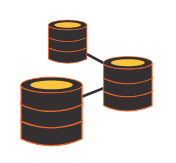
If you are wondering, daydreaming, and thinking: how will others process my information? At the launch of a new product or marketing campaign, you need to feel like your user.
When you open up a computer application or web pages such as Twitter or this one, you are instantly greeted with a variety of images, colors, and symbols that look like images but could be….anything. The Twitter bird or hashtag emojis are examples of one kind of visual encoding, while the color in a block header on a website such as this one is another example.
Knowing why we feel a certain way when we see certain things is half the battle when launching a new campaign.
We are here today to answer the question: “how do we process information?” Let’s begin seeing through the eyes of your users today.

How do we Process information?
In a nutshell, we process information from our primary senses. Those are sound, sight, scent, touch, and taste.
Thoughts are a form of senses as well but are more part of our processing center as opposed to our intake units.
Our five senses are our intake units. Simply put, when we “sense” something, it’s an input method to send a signal to the brain.
The brain then processes that in a way that we can use. Sometimes a scent or a taste can make us both enjoy and remember something at the same time.
That’s called encoding.

What is Encoding?
So when we intake information through our senses, multiple responses at the brain level can occur. The number of responses to each sensation is infinite to each human.
There are three kinds of encoding: visual encoding, acoustic encoding, and semantic encoding.
Acoustic encoding processes our sound experiences. And semantic processes how we feel things as well as how we communicate and rationalize things.
So when you read the news and respond emotionally, for example, your brain is engaging in semantic encoding.
This article is organized a certain way visually because the visual encoding that your brain is processing right now prefers to read things this way over any other way.
Many human responses are universal across cultures and across the wide globe. For example, we all know what excitement and anger are — they are emotions that don’t discriminate in any land.
We all encode things similarly across the world. Even if two different countries have two different reactions to the same piece of news, the way we encode the information is the same.
Because those feelings are relatable, you can use that information in your business. Change the way people feel about things by changing the way they see it.
Discover these six mind-blowing ways that AI can supercharge your business infrastructure and begin to get a feel for how this works. It’s easier than you think.

Why Understand Visual Encoding?
Understanding how those responses occur is essential in the world of AI, marketing, and business. When you understand this, you take your business to the next level.
When you know this, you can use scents and tastes in your products, audios in your marketing, emotive visual presentations, or tactile experience.
And all of the above.
When asking how do we process information, start with visual encoding, and then you can incorporate sensational experiences in the rest of your brand building.
Simply put, we intake something through one of our senses, it gets directed to the appropriate “department” in the brain, and sometimes there is a crossover. The most common crossover in the brain is when our limbic system (our emotional center) crosses over our language center.
For example, we see something in a store window and remember the day we got engaged and tell someone right then and there that we love them.
Sometimes when this crossover process happens, we buy something. In fact, for every single purchase we make as humans, some form of crossover must happen.
Our limbic system might be happy because we bought it, or not so much because we had to buy it and didn’t want to.
That’s why understanding how we process information visually is important. It can help make your end-user find that magic happy button, so they get excited when they purchase your product.
Pursuing that specific response is the Gestaltian method of business that is winning for many Fortune 500s today.

Gestalt Theory on Visual Encoding
The Gestalt theory on visual encoding goes back to German scientists who, in the 1920s, came up with multiple principles on visual encoding. They wanted to know what people see when processing visual cues.
It was called “Gestalt” psychology because the word “Gestalt” in German means “putting together.”
Gestaltian psychology and perception theories run on the notion that the whole is greater than the parts. If you see something Gestaltian, you see it as one object, and not a composition of the multiple objects that are in it.
For example, you’ve probably seen optical illusions in art form or online. There is a famous drawing of something that looks like the face of an older woman one way, and the shape of a younger woman the other way.
When the average human sees that, they see one obvious thing, at the Gestaltian level. But once we are told there is a series of parts in any given image, we process the same illusion in a broken down way.

A Business Example of Visual Encoding
Let’s take this to an example in the business world – the Mastercard logo. When you see that little blend of orange and red interlocking circles, you know what it is.
You see the grouping of interlocking circles and think. “Mastercard.” You don’t process an orange circle here, a red circle here, the text there, and then think about pulling it together.
You see the sum, not the parts.
That is the Gestaltian perception because that is all you know.
This kind of visual encoding we have as a commercial society presents a problem to a business like Mastercard that wants to change their logo. And this happened.
News broke that Mastercard wanted to change the logo but wasn’t sure how people would react. In the end, they chose to keep the orange and red circles, but took out the word “Mastercard.”
So the logo stayed the same, but for the text component of “Mastercard” in between the orange and red circles.
That’s because of Gestaltian perception principles of how we undergo visual encoding in our brains. If they had marketed the word alone “Mastercard” it would not be as recognizable to you like the simple orange and red interlocking circles are.
That kind of brand recognition is based on understanding visual encoding. So the next person that asks you, how do we process information, the answer is: It’s Gestaltian.
Learn more about the 6 fascinating effects data visualization has on decision making.
The three most important Gestalt principles in visual encoding are continuity, proximity, and enclosed.
Let’s have a look at those. Let’s use a random example of a New York deli counter to illustrate how consumers make decisions based on information processed through visual encoding.

Proximity Matters
Proximity is something that our brains register when we’re looking at something. Let’s say you’re short on counter space and want to figure out how to organize your sandwiches, salads, and donuts.
Do so in a way where birds of a feather stick together. In Gestalt principles, our brain tells us that when we see things close together we think they are related.
Give your diners a little nudge to buy some salad with their sandwich by placing sandwiches and salads together in the window or counter. They may never have thought of getting a salad today if you hadn’t positioned them as such, and suddenly realize they are hungrier than they thought.

Continuity Principle
The continuity principle stipulates that our brains compute things as being together or related when they are in a line. If you have ever shopped on Amazon or eBay, or even any other major retailer online, you have seen continuity when you see “Related Projects” bars.

You can use your actual line in a New York Deli to provide visual encoding clues to help your consumers buy more. If they need to line up right beside the counter with all of the yummy pastries and desserts before the cash register, so be it.
Another way to bring continuity into your presentation is how you line up things in the window. Keep all lines going either vertical or horizontal, and keep that consistent in your store.
If any of those lines break, the continuity of the visual encoding stops.

Enclosure
In the example above, of the art of the older, versus younger women, enclosure is the Gestalt perception principle we use to see what we see.
The enclosure is a form of visual encoding where our eyes look at something and we want to see one thing and one thing alone. You may go to a New York Deli one day with nothing but a cheeseburger on your mind, and you won’t see anything else in the store until you find that menu item.
So use enclosure in your presentations to upsell your customers in your deli as well. A fancy Thanksgiving display is an eye-catching thing that will draw attention as the “one big thing.”
But then, your customers will begin to see the parts that make up that sum and perhaps make some additional purchase decisions from there.
And just remember, enclosure encoding doesn’t stop there.
You will always be using multiple forms of perception and visual encoding at once. Knowing them will have you seeing what your customer sees and seeing your bottom line increase as a result.

Start Seeing Differently Today
Once you understand how to see what your clients, readers, or customers are seeing, and what they are feeling, you can create any marketing campaign that you want. Or even if you are just looking to bring some artificial intelligence into your staff room, reception hall, or board room, you want to ask yourself, “how do we process information” from the perspective of all who will see this space.
Maybe changing the way your employees feel when they are in the staff room will result in a more cohesive and unified team? You can achieve this by studying how they process the information of the visual cues they are currently working with.
Do they like ugly green walls? Or do they seem in better moods in the board room with the windows?
Enclosures, proximity, and continuity are all Gestaltian principles of visual encoding that can help you make everybody win and elevate your business today. When you have a big message to send or feeling to inspire, discover the answers to the age-old question, “how do we process information” today.
Learn more about data visualization and how it works at the knowledge base of Boost Labs today.
